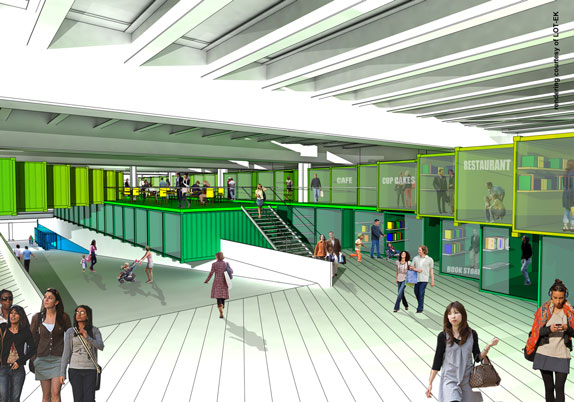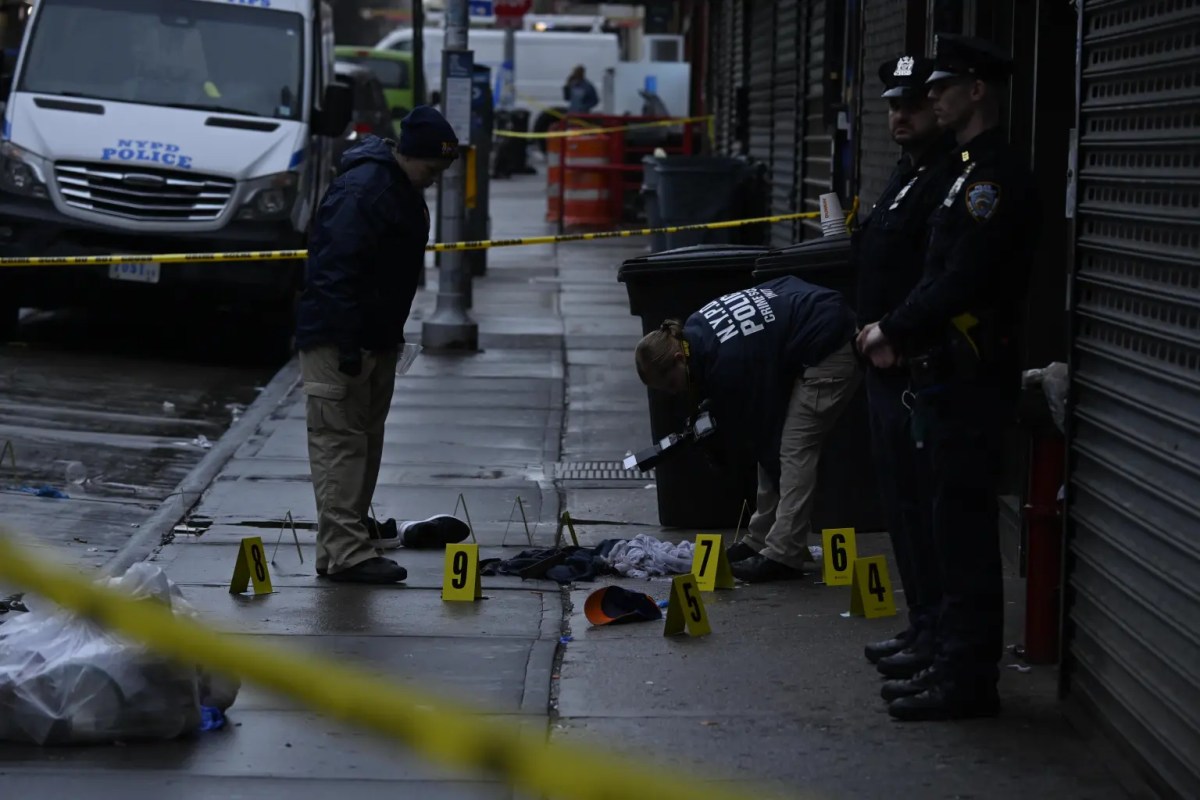 [/media-credit]
[/media-credit]
“We are drafting the environmental impact statement [E.I.S.] now, and then we will have that certified to enter into the ULURP [uniform land-use review procedure] process, which will probably happen this month,” said Greg Carney, a partner at Youngwoo & Associates.
The certification should be completed by about March or April, after which ULURP begins, lasting around another seven months.
“There are regulatory time frames for each step of that process, so it is pretty well-scripted,” said Carney.
Madelyn Wils, president and C.E.O. of the Hudson River Park Trust — the state/city authority that is building and operating the 5-mile-long waterfront park — recently gave a reporter a tour of the park’s piers.
She noted that the park draws an estimated 17 million people annually.
“The Hudson River Park is the second largest waterfront park in the entire country,” Wils said. “It’s the longest [waterfront] park there is, and it has completely transformed the West Side. It’s given families a chance to stay in New York, because they are able to have the activities they need in order to keep kids and people happy.”
Wils said the park hosted more than 100 free events last summer, which attracted some 150,000 people. Some examples include a two-day skate workshop with Tony Hawk, free concerts, a free Sunday night dance series, the River Flicks movie series and free classes for yoga, acting and Pilates. There was even a seasonal trapeze school atop Pier 40.
For longtime residents to watch the transformation from buckling piers to this beautiful, continuous esplanade and public-use piers is amazing, said Wils.
She pointed to the future redevelopment of Pier 54 at W. 13th St. and of the Gansevoort Peninsula — the latter which will feature almost 6 acres of grass lawn.
However, one of the big changes planned for Hudson River Park in the near future is the creation of the Pier 57 complex, which will feature an open-air market comprised of shipping containers on the bottom, topped by a public park.
“With the transformation of the Meat Market area, you can see now the possibility of transforming the waterfront and what that can do for the community,” Wils said. “It bridges the Village, Meat Market and Chelsea, making it a continuous, important strip.”
She pointed to the popularity of similar open-air markets in London.
“On the roof of Pier 57 will be a public park, and the Tribeca Film Festival will be able to use it,” the Trust president added. “What’s exciting is the kind of interesting, cutting-edge urbanism that Urban Space Management and Youngwoo want to bring to that pier. It has worked elsewhere around the world, and would be a great asset for New York.”
According to Carney, the location was chosen, in part, because Pier 57’s existing caissons — the unique structures that support it beneath the water — will not need to be replaced.
“The effect will be minimal, because we don’t need to do any external work to the caissons. So far, we have found them to be in good shape,” said Carney. “They are very dry, and sit in one spot on the riverbed. So we don’t have to disturb them at all, perhaps just do a bit of caulking.”
In response to community concerns, Carney assured that the project will not disturb or stir up any riverbed mud or possible toxic contaminants contained therein. The E.I.S. will look at the project’s environmental impact, noted Carney, and address issues from fish habitats to traffic.
The architect said that while they had done some analysis around marketing, leasing and various business impacts, many of these issues are addressed in this environmental impact study — nullifying the need for an additional economic impact study.
“We think it’s positive because it generates jobs — on the front end with construction, and then in operating the piers,” Carney said of the project. “But we have not commissioned a formal economic impact study, and have no plans to.”
At a July 14 public scoping meeting, members of the Community Board 4 Transportation Planning Committee raised issues about the project’s potential traffic and safety impacts and the influx of visitors it would bring.
Regarding transportation issues, Wils deferred to C.B. 4, but pointed out that she found the recent increase of water taxi service to ferry passengers to Ground Zero was a great way to keep traffic off local streets.
“I also love the idea of pedestrian bridges, and what you’ll see in the E.I.S. for Pier 57 is that they’ll be looking at an alternative of a pedestrian bridge,” Wils said. As you know, it adds a lot to the cost of a project,” Wils said of adding a foot bridge to span the West Side Highway. “For the future of the park, having pedestrian bridges in appropriate places could make some sense.”
Carney noted that the project’s E.I.S. deals with issues of traffic and access, and that a current survey factors in a possible reconfiguration of the bikeway and walkway to accommodate passenger loading and unloading for the pier.
“It may be proposed that certain signal and crossing terms are altered. Traffic experts are looking to deal with that,” he said, adding, “As part of the public scoping process, people will have an opportunity to comment.
“An overpass is part of the E.I.S. as an alternative,” he stated. “We looked at it, and if, in fact, the analysis says that there will be too much pedestrian traffic concentrated there or too many conflicts with vehicle traffic, we have suggested a number of ways that we can deal with it, and an overpass is one alternative.”
The architects have also explored tapping into the mass transit system or private shuttle routes, said Carney. But there is currently no plan for bus parking, aside from a loading/unloading zone. Freight unloading will be done during off-hours.
Plans for the Pier 57 project include a pier with 115 boat slips.
Wils said of the park, “There is a huge amount of boating activities, from sailing schools and free sailing lessons. It’s really a dream for people who want to be active not only at the water, but in the water.”
Wils noted that since the Environmental Protection Agency’s Clean Water Act, the Hudson River’s water quality has improved. People can and do safely swim in the river. She said that next spring, the park would feature 40 new moorings at Tribeca’s Pier 25 for community boaters.
Carney added that plans for Pier 57 would not ignore the potential impacts of global warming — namely, the possibility of rising water levels, which are a serious consideration in such waterfront parks.
“I think analysis was done by engineers looking at this,” he said. “There is a zone between the caissons and the floor of the pier, and another distance above that level. So far, the analysts have looked at what’s historically happened — as far as sea level and flooding — and I don’t think we need to do anything in addition to what’s there.”
Wils said each portion of Hudson River Park related to the adjacent community differently.
“The unique thing about the park is that you can spend all day there, and find a dozen different things to do. It’s really a New Yorker’s park,” said Wils. “The importance of the Hudson River Park in people’s daily lives in the Downtown community really has become what Central Park is to Midtown. It’s an extraordinary culture on the West Side.”

















